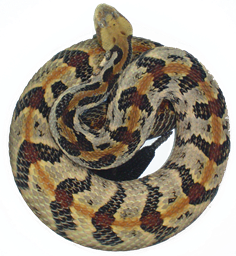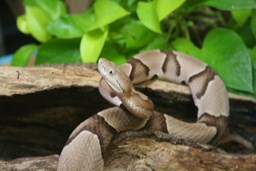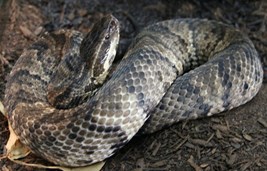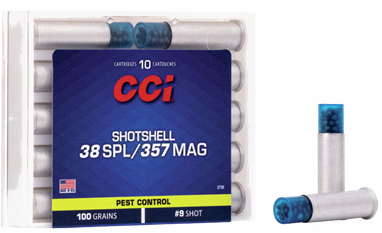An NRA Woman’s Guide to North American Venomous Snakes

An NRA Woman’s Guide to North American Venomous Snakes – NRA Women.com
Don’t be ssscared! These simple tips will keep you safe.
by HEIDI LYN RAO posted on August 24, 2021
Did you know that there is no such thing as a “poisonous” snake? The terms “poisonous” and “venomous” are oftentimes used interchangeably, but the difference lies in the way the toxin is delivered. Poison gets into the body through swallowing, inhaling or absorption through the skin. Venom, on the other hand, is a specialized type of toxin that is actively injected into prey through a bite or a sting.
As outdoor women, we need to know the types of snakes in the area we will be entering, and how to safely remove them if necessary. There are two types of venom found in the venomous snakes of North America. The first is hemotoxin and the second is neurotoxin. Hemotoxins are found in pit vipers, which includes rattlesnakes, copperheads and water moccasins. Hemotoxic pit vipers have the classic triangle-shaped head, and the venom of these snakes are delivered by hinged fangs that inject their venom into their prey, similar to hypodermic needles.
Neurotoxic venoms are injected by a primitive delivery system, which consists of fixed fangs equipped with grooves running down the back of the fangs, through which the venom flows.
There are four species of venomous snakes in America:
Rattlesnakes
Rattlesnakes are the most diverse species of venomous snakes in North America. There are 32 species of rattlesnakes and up to 83 subspecies. Rattlesnakes can range in a variety of color patterns from the pink rattler in the Grand Canyon, to the dark brown pattern of the Eastern Diamondback in the Eastern United States. Rattlesnakes are the most widely distributed venomous snakes in the United States.

Copperheads
Copperheads are found in the southern United States. There are five subspecies of copperheads in the U.S. Be aware, if you see one copperhead there are usually several more that you do not see! These venomous snakes range in color from a rust color, to a reddish color with hourglass patterns.

Water Moccasins
Water moccasins are found in the southeastern United States. These snakes are also referred to as “cottonmouths.” This is due to their unique habit of displaying a wide gaping mouth that is solid white when they feel threatened. There are three subspecies of water moccasins in the U.S., which range in color from a mottled black, to a solid black with an off-white or ivory belly

Coral Snakes
There are four subspecies of coral snakes in North and Central America. These venomous snakes belong to a unique class of snakes that includes cobras, mambas and kraits. Their neurotoxic venom is very dangerous, but coral snakes themselves are generally very shy of people. Coral snakes have a distinct color pattern which consist of red-yellow-black bands of color that touch. A rhyme can be said to identify these snakes:

“Red-on-Yellow, Kill a Fellow
Red-on-Black, Venom-Lack (or Friend of Jack)”
To make things more complicated, many non-venomous snakes mimic venomous snakes in appearance and movement. For example, non-venomous rat snakes and non-venomous bull snakes have similar markings as venomous rattlesnakes. Non-venomous king snakes and non-venomous milk snakes mimic the coloration of venomous coral snakes. When startled, some non-venomous snakes even vibrate the tips of their tails so fast against leaves and rocks, that it sounds like the rattling sounds of rattlesnakes.
Even non-venomous snakes can transmit E. coli or cause an infection if they bite you. Because of this, it is best to leave all of them alone.
Staying Safe
The best way to stay safe from venomous snakes when outdoors is to be vigilant and aware. By far, most of the incidents of envenomation are the result of trying to capture or handle venomous snakes. If you see any snake, you should give it plenty of space and leave it an escape route. Do not make any sudden movements while slowly backing away.
That said, always look before backing away. Many times, especially in the spring, there could be multiple snakes. I have seen up to 12 copperheads in a 10-foot-square area in early April in southeast Texas. The last thing you want to do is step on a venomous snake while backing away from another!
Snake Guns, Ammunition and Snake Handling Tools
Firearms
When you think of a snake gun, you think of the “snake charmer,” a small .410 shotgun designed in Texas for ranchers and outdoor enthusiasts. This is probably the most common firearm ever made for the sole purpose of shooting snakes.
There are others, of course, but you do not need a special firearm just for shooting snakes to have protection when outdoors. Almost every handgun can be turned into a snake gun with the right ammunition.
Ammunition
There is ammunition available that turns just about any single- or double-action revolver, and certain semi-auto pistols, into a “snake gun.” This ammunition is specially designed caliber-specific “shotshells.” They are usually referred to as “snake shot” or “rat shot.” The correct terminology for this type of ammunition is denoted by the caliber followed by the word “shotshell.” For example: .22 shotshell, .22 WMR shotshell, .38 shotshell, 9 mm, etc.

CCI shotshell ammunition is a popular brand of handgun shotshells. CCI shotshells consist of a primer, casing (of the specific caliber), #9 shot and a see-through blue plastic cap. These rounds are very effective against venomous snakes.
Snake Hook
I keep a snake hook close at hand when I am in south Texas. A snake hook is nothing more than a pole with a hook on the end. Not only are they good for moving venomous and non-venomous snakes, but snake hooks are also good for moving debris or rolling logs before you pick them up. This keeps you at a safe distance if there happens to be a snake underneath what you are picking up.

Snake Tongs
Snake tongs are an invaluable piece of equipment in snake country. Snake tongs are used if you must remove a venomous snake, but you are not in a place that you can safely discharge a firearm. For example, if an unwelcome rattlesnake ends up in your hunting cabin or deer blind, the slithery intruder can be safely removed to an area where it can be dealt with.

The key thing to remember if you encounter a snake, venomous or non-venomous, is to leave it alone and give it plenty of room. Stay aware, watch your step, and never put your boots on too fast in the morning!
